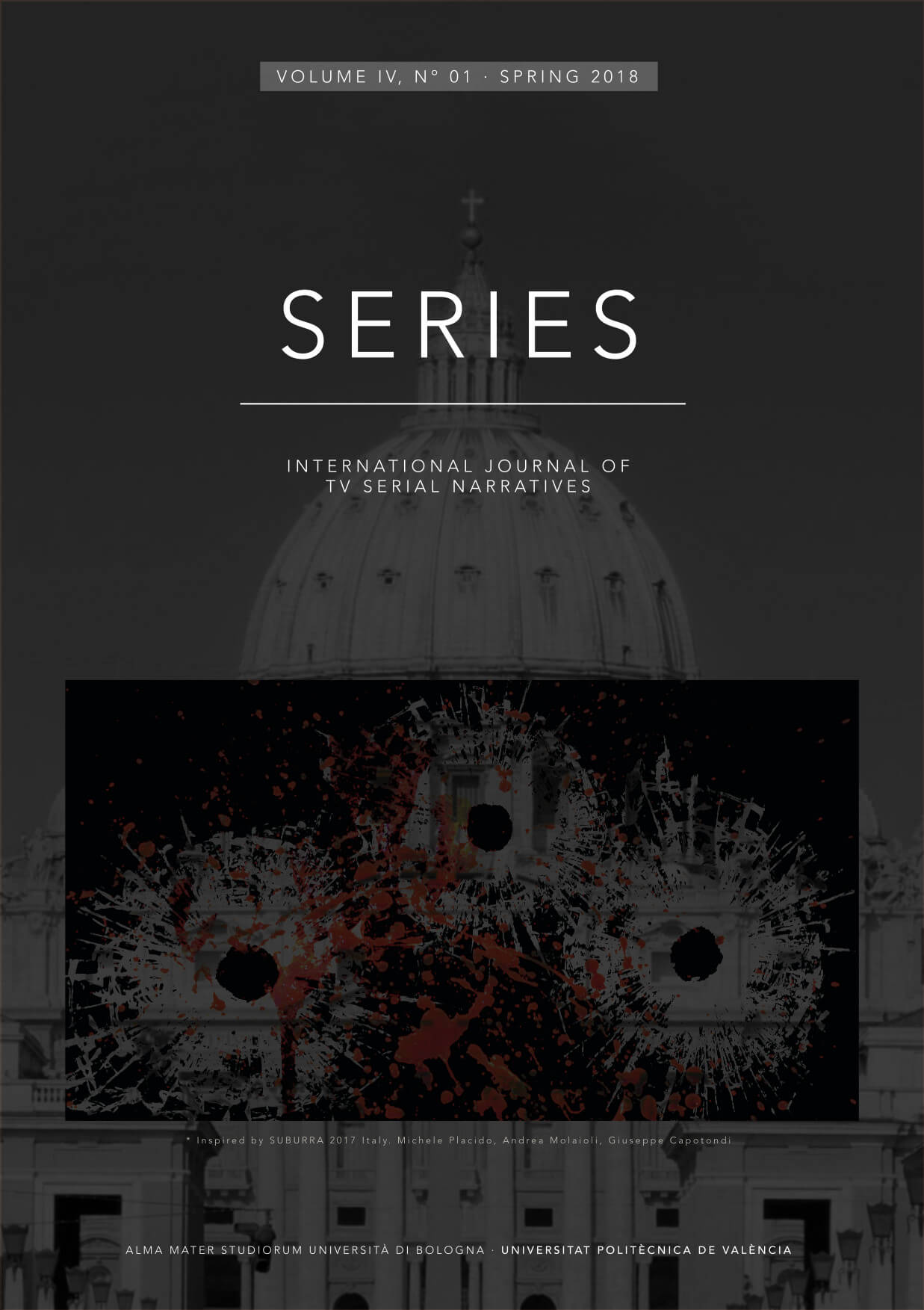Humor in Mohawk Girls: the Deft Interweaving of Gender and Race
DOI:
https://doi.org/10.6092/issn.2421-454X/8398Keywords:
sitcom, First Nations, humor, race, genderAbstract
The sitcom Mohawk Girls (2014-2017) calls for a change in racialized and gendered identity models. Mohawk Girls deftly approaches racial issues, often in a serious tone, all the while giving its audience what it expects from a sitcom: witty dialogue, many of which play on issues of gender. Through the analysis of two episodes of the sitcom’s first season, we look at how the show represents issues of race on a reservation and how racialism is part of the community’s unspoken norms. Choosing to produce a sitcom, a genre heavily rooted in white North American culture, comes out as an act of resilience that is manifested by the First Nations’ director and producers. In the analysis of the documentary work of director Tracey Deer, an argument has been made to the effect that this resilience has historical roots in the culture of Hodinöhsö:ni' nations (once referred to as the Iroquois). In order for these communities to adjust to, at times, abrupt changes in their population, adoption of individuals or groups of individuals has long been an important cultural institution. This can be illustrated by the fact that the integration of a neighboring group to the Hodinöhsö:ni' is referred to in the group’s own culture as an adoption where an outside eye might see it as the outcome of a political alliance. The show, through exaggeration and grotesque, takes on the issues of gender and its games of seduction, all the while considering the ambiguous interplay of seduction and domination. These borrowings are helpful in breaching a critical indent into the unwearied oppression that white society imposes on First Nations.References
Anderson, Benedict (1983). Imagined Communities: Reflections on the Origin and Spread of Nationalism. London: Verso.
Appiah, Kwame Antony (1992). In My Father’s House: Africa in the Philosophy of Culture. Oxford: Oxford University Press.
APTN (2012). Aboriginal Peoples Television Network. Licence Renewal Application. Application 2012-0993-2. http://crtc.gc.ca/eng/archive/2013/2013-19.htm?_ga=2.141789745.2025133608.1499531153-152375325.1499130630#bm17 (last accessed 24-02-18).
Bhabba, Homi (1994). The Location of Culture. New York: Routledge.
Bredin, Marian (2012). “Producing Aboriginal Television in Canada: Obstacles and Opportunities.” In Canadian Television: Text and Context, edited by Marian Bredin, Scott henderson, and Sarah A. Matheson, 73-93. Waterloo: Wilfrid Laurier University Press.
Cornellier, Bruno (2015). La “chose indienne”. Cinéma et politiques de la représentation autochtone au Québec et au Canada. Montreal: Nota Bene.
Deloria, Vine (1969). “Indian Humor” In Custer Died for your Sins: An Indian Manifesto, 146-67. London: Macmillan.
Fiske, John and John Hartley (2003). Reading Television 2nd edition. New York: Routledge.
Hall, Stuart (1989). “Cultural Identity and Cinematic Representation.” Framework 36: 68-81.
Kelsey, Penelope Myrtle (2014). Reading the Wampum. Essays on Hodinöhsö:ni‘ Visual Code and Epistemological Recovery. Syracuse: Syracuse University Press.
Metz, Christian (1966). “La grande syntagmatique du film narratif.” Communications 8(1): 120-4.
Mintz, Larry. (1985). “Situation Comedy.” In Brian G. Rose (ed.) TV Genres. A Handbook and Reference Guide, 114-5. Westport: Greenwood Press.
Mohawk Council of Kahnawá:ke. Kahnawá:ke Membership Law. [Enacted on 10 Kentenhkó:wa/November, 2003, amended on the 2 Onerahtóha/April 2007] http://www.kahnawake.com/council/docs/MembershipLaw.pdf (last accessed 24-02-18).
Nabokov, Peter, ed. (1992). Native American Testimony. New York: Viking Penguin.
Roth, Lorna (2005). Something New in the Air: The Story of First Peoples Television Broadcasting in Canada. Montreal-Kingston: McGill-Queen’s University Press.
Rowe, Kathleen (1995). The Unruly Woman: Gender and the Genres of Laughter. Austin: University of Texas Press.
Saint-Martin, Lori (1997). Contre-Voix. Essais de critique au féminin. Montreal: Nuit Blanche.
Tabobondung, Rebeka (2010). “Indigenous Peoples and Globalization: Self-Determination Through Autonomous Media Creation.” In Indigenous Peoples and Autonomy: Insights for a Global Age, edited by Mario Blaser et al., 130-47. Vancouver: University of British Columbia Press.
Valaskakis, Gail Guthrie (2005). Indian Country: Essays on Contemporary Native Culture. Waterloo: Wilfrid Laurier University Press.
Woolf, Virginia (1986). “The Plumage Bill.” In The Essays of Virginia Woolf edited by A. McNeillie, vol. 3: 1919-1924, 114-9. New York: Harcourt Brace Jovanovich.
Downloads
Published
How to Cite
Issue
Section
License
Copyright (c) 2018 Jean Sébastien
Copyrights and publishing rights of all the texts on this journal belong to the respective authors without restrictions.
This journal is licensed under a Creative Commons Attribution 4.0 International License (full legal code).
See also our Open Access Policy.





